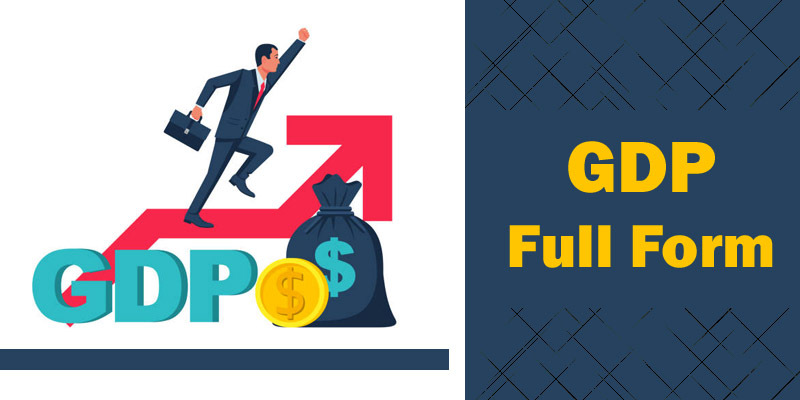The full form of GDP is Gross Domestic Product. It is the monetary value of all the final products produced within the economic territory for a specified period of time. It is used to measure the level and rate of growth of the national income of an economy.
Terms used in GDP
-
- “Gross” means total.
- “Domestic” means all economic activities done within the boundaries of a nation using its own capital.
- “Product” means goods and services.
- “Final” means finished items with the desired value addition.
This article includes the GDP overview, meaning, and significance.
GDP indicates
-
- The rate of economic growth
- Changes in living standards
- Changes in the income distribution between various groups within the population
Concept of GDP
During the period 1652–1654, William Petty developed the basic concept of GDP to defend landlords against unfair taxation by the Dutch and English. Later, in 1695, Charles Davenant improved on this method. Simon Kuznets developed the modern concept for it in 1934. GDP was accepted as the primary tool for measuring a country’s economy at the Bretton Woods conference in 1944.
Calculation of GDP
The GDP of a country is calculated by the below mentioned three approaches:
- Expenditure approach–
Y = C + I + G + (X – M), here Y = GDP
Components of expenditure approach–
-
- Consumption (C) – indicates the consumption expenditure of households
- Investment (I) – includes business investments in equipment, machinery, land, etc., and investments by households in new houses and properties.
- Government Spending (G) – indicates the sum of government expenditures on final goods and services, which includes the purchase of weapons for the military, salaries of public servants, and any investment expenditure by a government.
- Exports(X) –include the number of goods and services produced for other nations.
- Imports (M) – the amount of foreign supply is deducted.
This approach is widely used for calculating GDP.
- Income approach:
GDP = income from individuals in self-employment and jobs + profits of private sector business + Rent income from the ownership land approach
- Production Approach:
GDP= sum of net value added in domestic outputs
Net value added = Gross value of output – Value of intermediate items.
- GDP at Current price or Nominal GDP is the total market value of goods and services at current market prices
- GDP at factor cost or real GDP is the market value of the products, including the indirect taxes and excluding subsidies provided by the government.
Real GDP, or Gross Domestic Product at constant prices, is estimated to be Rs 140.78 lakh crore in 2018-19, with the base year 2011-12, indicating a 6.81 percent growth rate.
According to the IMF’s World Economic Outlook (October 2018), India accounts for 3.17 percent of global GDP in terms of exchange rates.
Conclusion
The monetary value of all finished goods and services produced in a country over a given time period is known as the gross domestic product (GDP). GDP provides an economic snapshot of a country and is used to estimate the size and growth rate of an economy.
Despite its limitations, GDP is an important tool for policymakers, investors, and businesses to use when making strategic decisions.

